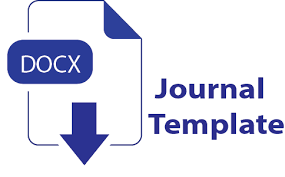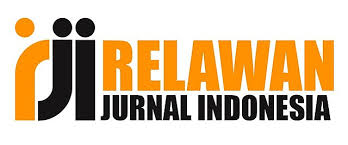Ta‘zīz Mahārat al-Kalām bi-Istikhdām Ādat Voicemaker al-Mu‘tamidah ‘alā Tiqniyāt al-Dhakā’ al-Iṣṭinā‘ī: Dirāsat Ḥālah ‘alā Ṭullāb al-Mustawā al-Ibtida‘ī
DOI:
https://doi.org/10.58223/al-irfan.v8i1.490Keywords:
Improving, Arabic Speaking skills, AI, VoicemakerAbstract
This study explores the use of Artificial Intelligence technology, specifically Voicemaker applications, in improving speaking skills. The aims of this study are identifying the steps for using Voicemaker and identifying the challenges and solutions in utilizing AI Voicemaker during the teaching and learning speaking skills process. The research employs a qualitative approach using a case study method. Data were collected through interviews, documentation, and observations of participants engaging with the technology in various learning contexts. The data were analyzed using thematic analysis. Findings indicate that the use of AI Voicemaker in teaching Arabic speaking skills is carried out through six steps: sound presentation by AI as auditory input, pronunciation imitation by students, structured practice (question and answer, substitution, transformation), free practice through dialogue and simulation, reinforcement with audio-visual media, and pronunciation evaluation and correction. In its implementation, the use of AI Voicemaker in teaching Arabic speaking skills to beginner-level students faces several challenges, including difficulties in imitating complex Arabic phonemes such as ‘ain and ghain, the lack of interactivity in providing feedback, students’ low self-awareness of pronunciation errors, and boredom caused by passive listening activities. The applied solutions include phonetic guidance from the teacher, the use of peer correction, self-monitoring exercises, and varied methods to make learning more interactive and contextual. The contribution of this research lies in providing a practical model for integrating AI-based Voicemaker tools into Arabic speaking instruction, offering structured steps and adaptive solutions that can guide educators in developing more effective, interactive, and technology-supported language learning environments.
References
Abdelali, A., Durrani, N., & Demiroglu, C. (2022). NatiQ : An End-to-end Text-to-Speech System for Arabic. Proceedings Ofthe The Seventh Arabic Natural Language Processing Workshop (WANLP), 394–398. https://aclanthology.org/2022.wanlp-1.38/
Anderson, L. W., Krathwohl Peter W Airasian, D. R., Cruikshank, K. A., Mayer, R. E., Pintrich, P. R., Raths, J., & Wittrock, M. C. (2001). Taxonomy for Learning, Teaching, and Assessing A Revision of Bloom’s Taxonomy of Educational Objectives. Longman. https://www.uky.edu/~rsand1/china2018/texts/Anderson-Krathwohl - A taxonomy for learning teaching and assessing.pdf
Black, P., & Wiliam, D. (1998). Assessment and classroom learning. Assessmenmt in Education, 5(1), 7–74. https://doi.org/10.1080/0969595980050102
Borg, W. R., & Gall, M. D. (1983). Educational Research: An Introduction (4th ed.). Longman.
Braun, V., & Clarke, V. (2006). Using thematic analysis in psychology. Qualitative Research in Psychology, 3(2), 77–101. https://doi.org/10.1191/1478088706qp063oa
Catania, A. C. (2003). B. F. Skinner’S Science and Human Behavior: Its Antecedents and Its Consequences . Journal of the Experimental Analysis of Behavior, 80(3), 313–320. https://doi.org/10.1901/jeab.2003.80-313
Creswell, J. W. (2007). Qualitative Inquiry & Research Design Choosing Among Five Approaches. In SAGE Publications. SAGE Publications. https://doi.org/10.1111/1467-9299.00177
Dede, C. (2005). Planning for Neomillennial Learning Styles. World Wide Web Internet And Web Information Systems, 28(1), 7–12. http://citeseerx.ist.psu.edu/viewdoc/download?doi=10.1.1.119.9896&rep=rep1&type=pdf
El Kheir, Y., Khnaisser, F., Chowdhury, S. A., Mubarak, H., Afzal, S., & Ali, A. (2023). QVoice: Arabic Speech Pronunciation Learning Application. Proceedings of the Annual Conference of the International Speech Communication Association, INTERSPEECH, 2023-Augus, 3677–3678.
Gong, J. (2023). The Concept, Content and Implication of Krashen’s Input Hypothesis. Proceedings of the 2022 4th International Conference on Literature, Art and Human Development (ICLAHD 2022), 1208–1213. https://doi.org/10.2991/978-2-494069-97-8
Hamdy, M. Z., & Ningsih, W. P. (2022). Inovasi Media Pembelajaran Bahasa Arab. STAI DUBA Press.
J. Michael O’Malley, A. U. C. (1995). Learning Strategies in Second Language Acquisition. In CAMBRIDGE UNIVERSITY PRESS. Cambridge University Press. https://www.researchgate.net/publication/252160472_Corrective_feedback_and_learner_uptake
Jack C. Richards and Theodore S. Rodgers. (2024). Approaches and Methods in Language Teaching. In Approaches and Methods in Language Teaching. Cambridge University Press. https://doi.org/10.59646/methodsengteach/108
Krashen, S. D. (2009). Principles and Practice in Second Language Acquisition. In Vocabulary and Language Teaching. University of Southern California.
Liberman, A. M. (1985). The motor theory of speech perception revised. Cognition, 21(2), 1–36. https://doi.org/10.3758/PBR.15.2.453
Lyster, R., & Ranta, L. (1997). CORRECTIVE FEEDBACK and LEARNER UPTAKE. Studies in Second Language Acquisition, 19(1), 37–66. https://doi.org/10.1017/S0272263197001034
Michael Thomas, H. R. (2010). Task-Based Language Learning and Teaching with Technology. In Continuum. Continuum International Publishing Group. http://scioteca.caf.com/bitstream/handle/123456789/1091/RED2017-Eng-8ene.pdf?sequence=12&isAllowed=y%0Ahttp://dx.doi.org/10.1016/j.regsciurbeco.2008.06.005%0Ahttps://www.researchgate.net/publication/305320484_SISTEM_PEMBETUNGAN_TERPUSAT_STRATEGI_MELESTARI
Mishra, P., & Koehler, M. J. (2008). Introducing Technological Pedagogical Content Knowledge. Paper Presented at the Annual Meeting of the American Educational Research Association, 1–16. https://www.matt-koehler.com/publications/Mishra_Koehler_AERA_2008.pdf
Moleong, L. J. (2007). Metodologi Penelitian Kualitatif. PT Remaja Rosdakarya.
Ningsih, W. P., & Hamdy, M. Z. (2022). Strategi Pembelajaran Bahasa Arab. STAI DUBA Press.
Ningsih, W. P., Hamid, M. A., Rosyidi, A. W., & Hamdy, M. Z. (2024). The Designing of Teaching Materials by Using Mnemonic Music Techniques to Strengthen Vocabularies Memorizing. Arabiyatuna: Jurnal Bahasa Arab, 8(2), 757–778.
Rahardjo, M. (2020). Metodologi Penelitian Kualitatif Untuk Ilmu-Ilmu Sosial dan Humaniora. Republik Media.
Richard E, M. (2009). Multimedia Learning. In Sustainability (Switzerland) (Vol. 11, Issue 1). Cambridge University Press.
Richards, J. C. (2006). Communicative Language Teaching Today. In Cambridge University Press (Vol. 1, Issue 1). Cambridge University Press.
Rosyad, M. S. (2022). Tashmim Ikhtibar al-Lughah al-Arabiyah Fi Dhaui adz-Dzaka’ al-Ishtina’iy: Anmudzajan Voicemaker (Tajribah Markazi al-Lughat Fi Shiyaghah Nusus Fahmi al-Masmu’ Laday TOAFL). Insyirah: Jurnal Ilmu Bahasa Dan Studi Islam, 5(1), 1–16. https://doi.org/https://doi.org/10.26555/insyirah.v5i1.5372
Sadoski, M., & Paivio, A. (2004). Dual coding theory in reading. Theoretical Models and Processes of Reading, 1–62.
Santoso, J. T. (2023). Kecerdasan Buatan (Artificial Intellegence). Yayasan Prima Agus Teknik.
Shao, S., Alharir, S., Hariri, S., Satam, P., Shiri, S., & Mbarki, A. (2022). AI-based Arabic Language and Speech Tutor. IEEE. https://ieeexplore.ieee.org/document/10017924/
Skinner, B. F. (2014). Verbal Behavior. Cambridge.
Sugiyono. (2018). Metode Penelitian Kuantitatif, Kualitatif dan R & D. ALFABETA.
Vygotsky, L. S. (2019). Mind In Society The Development of Higher Psychological Processes. In Accounting in Australia (RLE Accounting). Harvard University Press. https://doi.org/10.4324/9781315867519-201
Wayland, R. (2021). Second Language Speech Learning Theoritical and Empirical Progress. In Second Language Speech Learning. Cambridge University Press. https://doi.org/10.1017/9781108886901
Wiwik Prasetiyo Ningsih. (n.d.). Tathwir Al-kitab At-ta’limy li Maharatil Kalam bi Al-Khorithoh Adz-Dzihniyah. Al-Irfan: Journal of Arabic Literature and Islamic Studies, 1. https://doi.org/10.36835/al-irfan.v1i1.3220
Downloads
Published
How to Cite
Issue
Section
License
Copyright (c) 2025 Wiwik Prasetiyo Ningsih, Jiddah Hassan Muhammad

This work is licensed under a Creative Commons Attribution 4.0 International License.
Lisensi :
Al-Irfan: Journal of Arabic Literature and Islamic Studies is published under conditions Creative Commons Attribution 4.0 International License / CC BY 4.0 This license permits anyone to copy and redistribute this material in any form or format, modify, modify, and make derivative works of this material for any purpose, including commercial purposes, so long as they credit the author for the original work.











